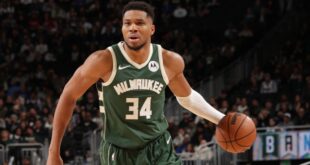In every NBA postseason, there are two categories of key players: stars and X-factors. Each type can significantly uplift a team for a match, a series, or even throughout the entirety of the playoffs.
The key difference between them emerges during challenging times. X-factors are not subjected to the same level of expectation or scrutiny as stars. While a player’s contributions may be seen as a delightful enhancement during the good moments, they have the luxury of fading into the background when situations turn sour.
Stars, on the other hand, do not have that privilege. They carry weighty expectations, are tasked with heavy responsibilities, and must build or maintain their reputations. Fans and analysts typically assess their careers based on the number of championship rings they possess. It’s a more demanding journey, but that’s what the high salaries reflect.
Below are 12 prospective game-changers—six stars and six X-factors—from the four teams competing in the Eastern and Western Conference Finals, starting Tuesday in Oklahoma City (listed in alphabetical order by last name):
1. **Jalen Brunson, New York Knicks**
**Playoff stats:** 28.8 ppg, 3.9 rpg, 7.7 apg
Brunson embodies the driving force for New York, placing second in scoring among all players who have reached this stage (behind Shai Gilgeous-Alexander, 29.0) and leading in attempts with an average of 22.3 per game. Since joining the Knicks three years ago, the determined point guard has averaged 30 points in opening playoff games, including a notable 43 points in Game 1 against Indiana last season.
2. **Anthony Edwards, Minnesota Timberwolves**
**Playoff stats:** 26.5 ppg, 8 rpg, 5.9 apg
Known for his electrifying dunks and vibrant personality, Edwards has also showcased his improved three-point shooting, leading the NBA in triples during the regular season. This spring, he remains active with 35 three-pointers and a shooting percentage of 44.2% against Golden State in the semifinals. The matchup against Gilgeous-Alexander might inspire a stellar performance from Minnesota’s standout.
3. **Shai Gilgeous-Alexander, Oklahoma City Thunder**
**Playoff stats:** 29 ppg, 5.9 rpg, 6.4 apg
Gilgeous-Alexander is a frontrunner for the Kia NBA Most Valuable Player award for the regular season, and he’s positioned himself as a potential MVP for the postseason as well. His counterpart from Minnesota, Edwards, is sure to take note. Historically, Gilgeous-Alexander thrives against the Timberwolves, showcasing remarkable averages of 35 ppg, 7.3 rpg, and 6.8 apg this season against them, along with an impressive shooting percentage of 51.1%.
4. **Tyrese Haliburton, Indiana Pacers**
**Playoff stats:** 17.5 ppg, 5.5 rpg, 9.3 apg
Dubbed the “Overrated” Kid by 13 unnamed competitors in a questionable national survey (emphasizing the irony of the label), Haliburton has been essential for the Pacers, helping them reach this round for two consecutive years. Although his scoring average is the lowest among the stars listed, no one in Indianapolis is concerned due to his playmaking-first approach and ability to seize critical opportunities.
5. **Julius Randle, Minnesota Timberwolves**
**Playoff stats:** 23.9 ppg, 5.9 rpg, 5.9 apg
Whether evaluating Randle’s output, reliability, or influence, he has proven invaluable to the Timberwolves over the first two rounds, prompting newfound respect for the veteran forward. His capacity to advance the ball aids Edwards’ movement, disrupts defenses, and allows veteran Mike Conley to play a different role, while still being a scoring threat both inside and beyond the arc.
6. **Karl-Anthony Towns, New York Knicks**
**Playoff stats:** 19.8 ppg, 11.3 rpg, 1.1 apg
Towns has recently turned into a double-double machine, achieving seven in his last eight games and totaling 28 in 44 playoff outings. Throughout his battles with Indiana, he has displayed impressive statistics: 27.8 ppg, 11.1 rpg, and 56.1% shooting (including 40% from three). However, he must be cautious about foul trouble, averaging 4.4 fouls per playoff game, with opponents increasingly targeting him.
7. **Rudy Gobert, Minnesota Timberwolves**
**Playoff stats:** 8.9 ppg, 9.6 rpg, 1.3 bpg
After facing teams lacking size in the initial two rounds, Gobert is expected to be more influential now. With 41 double-doubles in 79 playoff games, albeit only 10 in 30 with the Timberwolves, the four-time Kia Defensive Player of the Year is crucial against an OKC offense that leads in drives per game and ranks high in mid-range shooting attempts.
8. **Josh Hart, New York Knicks**
**Playoff stats:** 18.2 ppg, 8.5 rpg, 5.2 apg
It’s a surprise that there’s no ‘X’ in Hart’s name, given how well he represents what an X-factor should be. His versatility was on full display in the decisive Game 6 against Boston—contributing 10 points, 11 rebounds, and 11 assists—while scoring 40% of his points in the fourth quarters of the series. Hart has averaged 8.7 rebounds this postseason, following a personal best of 9.6 during the regular season.
9. **Isaiah Hartenstein, Oklahoma City Thunder**
**Playoff stats:** 10.3 ppg, 8.7 rpg, 2.8 apg
Hartenstein has provided the Thunder with the boost they needed following his underrated arrival last summer. He is averaging 14.3 points and 12.2 rebounds per 36 minutes this postseason, showing significant improvement over his previous performance with the Knicks. His contributions are among the key reasons why the Thunder excel at scoring off putback opportunities, converting at 62.3%.
10. **Andrew Nembhard, Indiana Pacers**
**Playoff stats:** 14.6 ppg, 3.4 rpg, 6 apg
Nembhard has evolved into an ideal backcourt partner for Haliburton in their third season together. Versatile in playmaking and scoring, Nembhard has shot an impressive 50.5% overall in the playoffs and 50% from beyond the arc, a substantial increase from his regular-season percentage. The steady 6-foot-5 guard also frequently takes on tougher defensive assignments.
11. **Pascal Siakam, Indiana Pacers**
**Playoff stats:** 18.8 ppg, 6.2 rpg, 3.1 apg
Siakam’s scoring is consistent with last spring’s performance that helped Indiana get to this level, but his three-point shooting has improved significantly (44.1% compared to 29.8% the previous year). As a wiry 6-foot-8 forward, he is among the few Pacers capable of creating offense in the halfcourt and is likely to face tough defense from his former teammate OG Anunoby, as New York aims to limit his effectiveness.
12. **Jalen Williams, Oklahoma City Thunder**
**Playoff stats:** 19.6 ppg, 5.4 rpg, 5.7 apg
Williams made his All-Star debut in February but falls into the X-factor category due to some recent inconsistencies. He shot 55.1% (27-of-49) in three of the Thunder’s games against Denver in the Western semifinals but struggled, hitting only 23.8% (15-of-63) in the other four. Nevertheless, he achieved 42 assists versus just 10 turnovers. His defensive adaptability could be crucial against Minnesota, as he could match up against top scoring threats like Edwards or adjust to contain secondary players like Randle, Jaden McDaniels, or Gobert.
* * *
Steve Aschburner has been covering the NBA since 1980. Feel free to send him an email, explore his archive, or follow him on X.
The opinions expressed on this page do not necessarily reflect those of the NBA, its teams, or Warner Bros. Discovery.
 NBA News NBA News, Match Reports and Updates
NBA News NBA News, Match Reports and Updates



